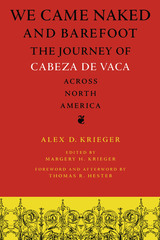
A sweeping history of American cities and towns, and the utopian aspirations that shaped them, by one of America’s leading urban planners and scholars.
The first European settlers saw America as a paradise regained. The continent seemed to offer a God-given opportunity to start again and build the perfect community. Those messianic days are gone. But as Alex Krieger argues in City on a Hill, any attempt at deep understanding of how the country has developed must recognize the persistent and dramatic consequences of utopian dreaming. Even as ideals have changed, idealism itself has for better and worse shaped our world of bricks and mortar, macadam, parks, and farmland. As he traces this uniquely American story from the Pilgrims to the “smart city,” Krieger delivers a striking new history of our built environment.
The Puritans were the first utopians, seeking a New Jerusalem in the New England villages that still stand as models of small-town life. In the Age of Revolution, Thomas Jefferson dreamed of citizen farmers tending plots laid out across the continent in a grid of enlightened rationality. As industrialization brought urbanization, reformers answered emerging slums with a zealous crusade of grand civic architecture and designed the vast urban parks vital to so many cities today. The twentieth century brought cycles of suburban dreaming and urban renewal—one generation’s utopia forming the next one’s nightmare—and experiments as diverse as Walt Disney’s EPCOT, hippie communes, and Las Vegas.
Krieger’s compelling and richly illustrated narrative reminds us, as we formulate new ideals today, that we chase our visions surrounded by the glories and failures of dreams gone by.

Highlights key issues in contemporary urban design through a discussion of its origins, current state, and future
Fifty years ago a landmark conference at Harvard University established urban design as a distinct architectural and planning practice. Today, with the world’s urban population surpassing three billion people, urban design has become more crucial than ever. Indeed, the concerns that initially brought leading architects and city planners together—including concerns over sprawl, pollution, and aging infrastructure—have only intensified over the past half century.
In Urban Design, Alex Krieger and William S. Saunders have assembled prominent figures in architecture, planning, and landscape design to look back on the evolution of the discipline of urban design; assess the current state of the field; and anticipate the challenges posed by the unprecedented rate of urbanization, particularly in the developing world, and how the profession will need to adapt in order to confront them. The volume opens with excerpts from transcripts of the 1956 Harvard conference followed by essays that contextualize and critique its assumptions and ambitions. Subsequent essays address such topics as the social conscience of urban design and stake out the competing sensibilities in the field, from New Urbanism to avant-garde. As humanity becomes an urban species to a degree that was unimaginable fifty years ago, this comprehensive volume seeks to encourage today’s designers to draw on the energy and messy vitality of cities in shaping tomorrow’s urban environments.Contributors: Jonathan Barnett, Denise Scott Brown, Joan Busquets, Kenneth Greenberg, John Kaliski, Timothy Love, Fumihiko Maki, Richard Marshall, Eric Mumford, Michelle Provoost, Peter G. Rowe, Edward W. Soja, Richard M. Sommer, Michael Sorkin, Emily Talen, Marilyn Jordan Taylor, Wouter Vanstiphout, Charles Waldheim.
Second place, Presidio La Bahia Award, Sons of the Republic of Texas, 2003
Perhaps no one has ever been such a survivor as álvar Núñez Cabeza de Vaca. Member of a 600-man expedition sent out from Spain to colonize "La Florida" in 1527, he survived a failed exploration of the west coast of Florida, an open-boat crossing of the Gulf of Mexico, shipwreck on the Texas coast, six years of captivity among native peoples, and an arduous, overland journey in which he and the three other remaining survivors of the original expedition walked some 1,500 miles from the central Texas coast to the Gulf of California, then another 1,300 miles to Mexico City.
The story of Cabeza de Vaca has been told many times, beginning with his own account, Relación de los naufragios, which was included and amplified in Gonzalo Fernando de Oviedo y Váldez's Historia general de las Indias. Yet the route taken by Cabeza de Vaca and his companions remains the subject of enduring controversy. In this book, Alex D. Krieger correlates the accounts in these two primary sources with his own extensive knowledge of the geography, archaeology, and anthropology of southern Texas and northern Mexico to plot out stage by stage the most probable route of the 2,800-mile journey of Cabeza de Vaca.
This book consists of several parts, foremost of which is the original English version of Alex Krieger's dissertation (edited by Margery Krieger), in which he traces the route of Cabeza de Vaca and his companions from the coast of Texas to Spanish settlements in western Mexico. This document is rich in information about the native groups, vegetation, geography, and material culture that the companions encountered. Thomas R. Hester's foreword and afterword set the 1955 dissertation in the context of more recent scholarship and archaeological discoveries, some of which have supported Krieger's plot of the journey. Margery Krieger's preface explains how she prepared her late husband's work for publication. Alex Krieger's original translations of the Cabeza de Vaca and Oviedo accounts round out the volume.
READERS
Browse our collection.
PUBLISHERS
See BiblioVault's publisher services.
STUDENT SERVICES
Files for college accessibility offices.
UChicago Accessibility Resources
home | accessibility | search | about | contact us
BiblioVault ® 2001 - 2024
The University of Chicago Press









